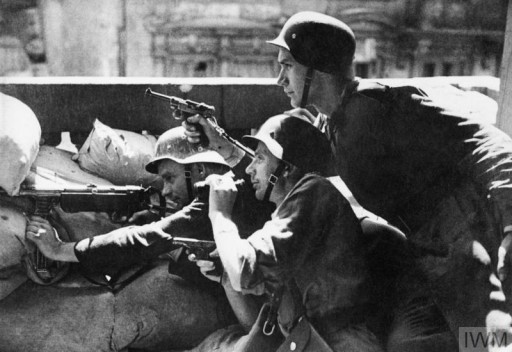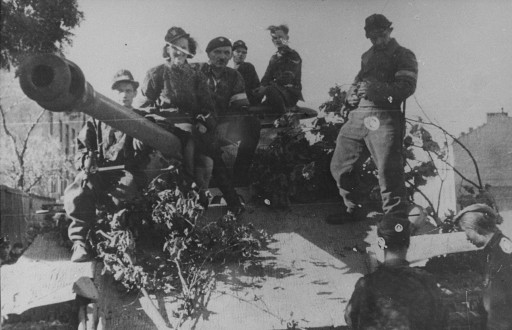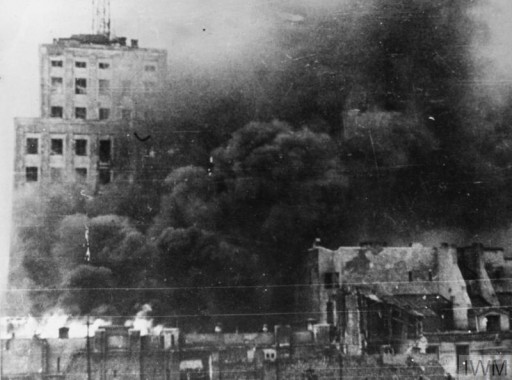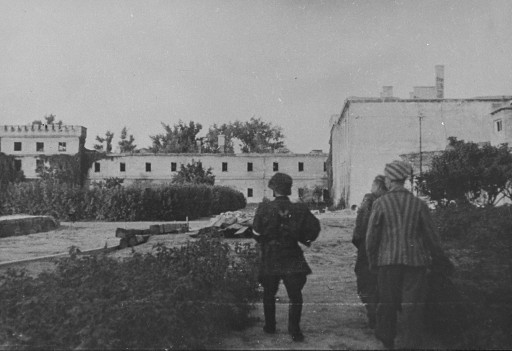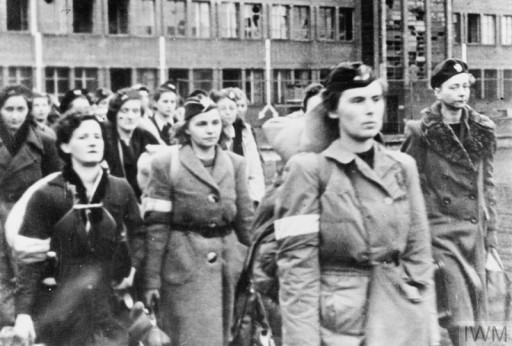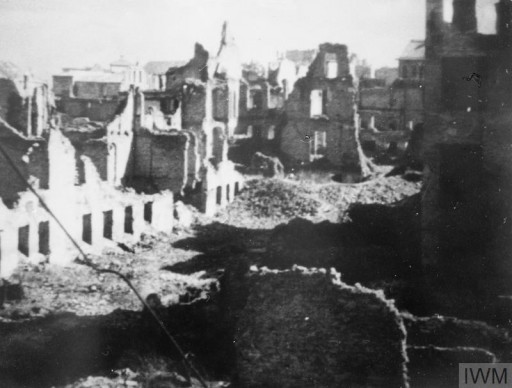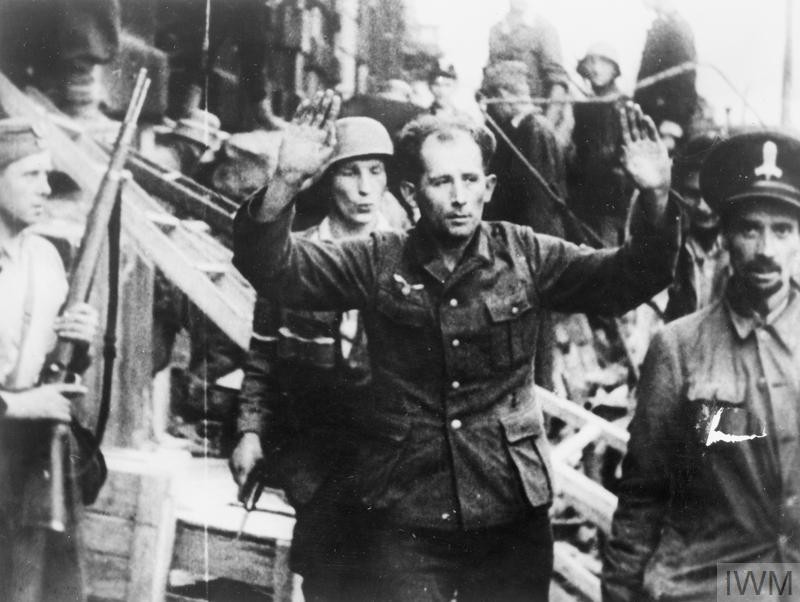
Warsaw Uprising
On August 1, 1944, the Polish Home Army (Armia Krajowa, AK), a non-Communist underground resistance movement, initiated the Warsaw uprising to liberate the city from the German occupation and reclaim Polish independence. The impetus for the military action was the ongoing retreat of the German forces from Poland, followed by the appearance of the Soviet Red Army along the east bank of the Vistula River. By October 2, 1944, the Germans had suppressed the uprising, deporting civilians to concentration and forced-labor camps and reducing Warsaw to ruins.
Key Facts
-
1
Planned as a short military revolt, the Warsaw uprising lasted for 63 days.
-
2
The 1944 Warsaw uprising was the single largest military effort undertaken by resistance forces to oppose German occupation during World War II.
-
3
In the end, German troops destroyed the majority of Warsaw during and immediately after the uprising. Among the demolished buildings was the Royal Castle.
Background
On November 20, 1943, general Tadeusz “Bór” Komorowski, commander of the Home Army, ordered Operation Tempest. This operation was planned as a series of local military uprisings against the Germans, preceding the liberation of Poland by the Red Army as it advanced west. The idea of an armed action came originally from the Polish government-in-exile in London, the internationally recognized government of Poland. It did not include cooperation with the Soviets due to broken diplomatic relations with the Soviet Union after the Katyn massacre of Polish military officers had been revealed. Komorowski’s plan went beyond the government’s instruction, however. He ordered full disclosure of the AK soldiers to the Red Army, which had entered the territory of Poland in January 1944, and a partnership in combat against the German enemy.
Initial plans excluded Warsaw from Operation Tempest. However, the situation changed in July 1944. In the face of advancing Soviet forces, the Polish communists proclaimed the Polish Committee of National Liberation (Polski Komitet Wyzwolenia Narodowego, PKWN) in Chełm as an executive governing authority in opposition to the Polish government-in-exile. Supported by the Soviet Union, PKWN installed communist administration in the areas liberated by the Red Army.
Following several days of discussion between the leadership of the AK and the Polish government-in-exile, Komorowski announced the outbreak of the uprising on July 31, 1944, after Soviet forces appeared along the east bank of the Vistula River. The AK anticipated that the uprising would take only a few days and would free Warsaw before the Soviets entered the city.
The Uprising, August 1–October 2, 1944
The Warsaw uprising began on August 1, 1944, at 5 p.m. Approximately 45,000 members of the AK under commandment of general Antoni Chruściel “Monter” joined the combat. They were supported by 2,500 soldiers from other resistance movements, such as the National Armed Forces (Narodowe Siły Zbrojne, NSZ) and the communist People's Army (Armia Ludowa, AL). Only a quarter of the partisans had access to weapons, fighting against 25,000 German soldiers equipped with artillery, tanks, and air forces.
Within the first few days of the uprising, Polish forces took over several districts of Warsaw, including downtown and the Old Town. After the initial success of the AK, German troops gradually recaptured the city. They surrounded the Old Town and other areas. On September 2, after more than two weeks of combat, the last Polish soldiers left the Old Town through the sewers. Warsaw’s historical district was turned into ruins. In mid-September, the Red Army took Praga, the district of Warsaw on the east bank of the Vistula River, but did not cross the river to intervene.
Towards the end of September 1944, German forces took control over further parts of Warsaw, systematically destroying most of the city to the ground. On October 2, 1944, the uprising ended. The number of victims exceeded 180,000 people. More than 11,000 AK soldiers were captured as prisoners of war, including “Bór” and “Monter.” Soviet troops resumed their offensive much later, taking over devastated Warsaw on January 17, 1945.
Civilians during the Uprising
From the beginning of the uprising, German troops following Heinrich Himmler’s order to destroy the city took revenge on civilians. The bloodiest action against the inhabitants took place between August 5 and 7, 1944, when approximately 40,000 men, women, and children were murdered during massacres in the district of Wola. Simultaneously, the Germans initiated deportations of civilians from the city to the transit camp, Dulag 121, outside of Warsaw. They later relocated them for forced labor or to concentration camps.
Jews and the Warsaw Uprising
The outbreak of the uprising also involved thousands of Jews hiding in Warsaw. Many of them lost contact with Poles helping them on the “Aryan” side of the city. For some Jews, the military revolt was a factor to leave their hiding places and fight against the Germans. The number of Jews who fought remains uncertain—many of them joined the AK under false names. The attitude of the Polish Home Army towards Jewish fighters was ambiguous. Some Jews faced exclusion and harassment, while others felt fully accepted by Polish soldiers. On August 5, 1944, one of the AK battalions liberated 348 Jews from Gęsiówka, a concentration camp located in the former Warsaw ghetto. The majority of them joined the Polish Home Army and fought in the uprising.
Several dozen members of the Jewish Combat Organization (Żydowska Organizacja Bojowa, ZOB) who had survived the Warsaw ghetto uprising of 1943 were still in the city when the Warsaw uprising broke out. Under the command of the former ghetto fighters Itzhak Zukerman, Zivia Lubetkin, and Marek Edelman, the ZOB organized an independent Jewish platoon. Zukerman became its commander. On August 3, 1944, he released an appeal to the remaining Jews of Warsaw to join the uprising. After rejection from the AK side, the Jewish squad joined the People's Army (AL) fighting in Old Town. Zukerman, Lubetkin, and Edelman survived the Warsaw uprising.
Commemoration
The Warsaw uprising is commemorated annually on August 1. At exactly 5 pm, on that day, sirens can be heard in Warsaw and other Polish cities. In 2004, the city of Warsaw opened the Warsaw Rising Museum to mark the 60th anniversary of the revolt.


